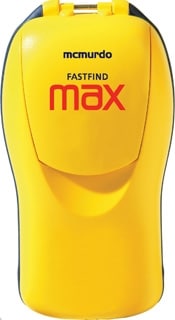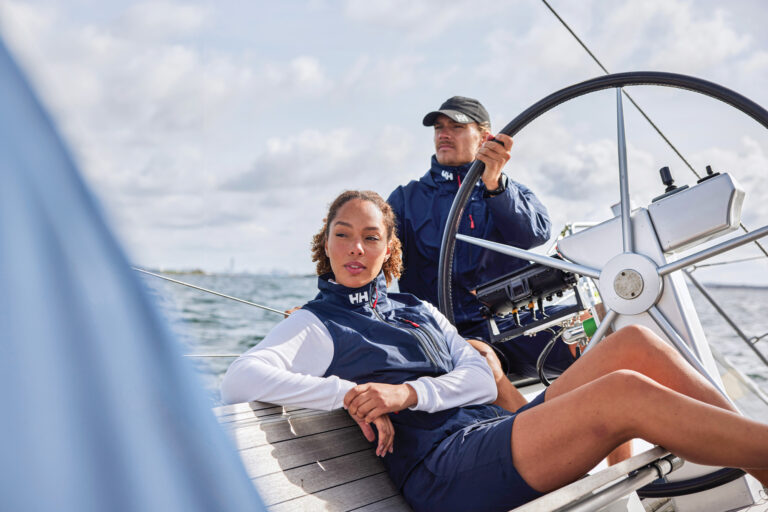
oct08elect1.jpg
According to a U.S. Coast Guard report: At 0500 on 13 May 2008 a 406 MHz EPIRB rented from BoatUS was activated by Captain Paul Doughty of the 48-foot sailboat Wolf shortly after the vessel was holed by collision with a submerged object. The Wolf was about 200 nm east of Brunswick, Georgia. Fifteen minutes later Doughty used a satellite phone to call the USCG Rescue Center. They told him that the EPIRB signal had been received and that the USCGC Reliance had been directed to come to their aid. At the time of the call, Reliance was within six miles of the Wolf ‘s position.
“Shortly after I got off the satellite phone, the cutter was there,” said Doughty, according to the report. “The EPIRB was instrumental in saving our lives. It just goes to show how important planning for this very thing is.”
If you think about the number of people on the water at any given time, yachting is a remarkably safe activity. But the sea is vast and can be a very lonely place. Even with today’s high standards for yacht construction and equipment, bad things can happen to a yacht or to someone on board, making it necessary for us to ask for outside assistance. This help can show up in the form of an emergency evacuation of an ill or injured guest or crew member, or, in the extreme, evacuation and rescue of everyone on board. Regardless of why we need help, we must be prepared and equipped to maximize the odds, both for all on board and for the search-and-rescue personnel who risk their lives as they come to our aid.
We recently discussed aspects of search-and-rescue operations with the ultimate professionals in the SAR business, members of the U.S. Coast Guard. The discussion and the consensus opinion we reached provide some very useful thoughts and guidance for anyone who ventures offshore, especially those of us who venture beyond the range of shore-based VHF radio service.
Everyone in the discussion agreed that the 406 MHz EPIRB is the best device to have at hand when things go wrong at sea. The Personal Locator Beacon (PLB) is a smaller 406 MHz emergency transmitter with somewhat shorter battery life: 20 hours versus 48 hours at -40° C. While the PLB is an invaluable backup for an individual crew member, it is not a substitute for the vessel’s EPIRB.
The location of an activated EPIRB or PLB can be triangulated by the COSPAS-SARSAT satellite system. Some devices give searchers a leg up by including GPS data in their messages, but in many SAR missions the position of the vessel in distress must be determined by search aircraft. The beacons include a 121.5 MHz transmitter that can be received by aircraft direction-finding equipment, but the low power of the signal-typically 50 milliwatts-often makes it difficult to receive the signal at any substantial distance.
Other factors are at play. The beacon is in the water, so waves can attenuate the signal, especially when the vessel in distress is at the searching aircraft’s radio horizon. The 121.5 MHz homing signal may not be detected until the aircraft is quite close to the beacon. The Coast Guard has responded to this challenge by developing a homing receiver that picks up the 5-watt 406 MHz signal that is 100 times more powerful. In spite of the fact that the 406 signal was not designed for homing service and is “on” for only a very brief period of time of each minute, initial tests of the new homing system have been very successful, to the delight of seafarers.
One SAR pilot commented on the value of an EPIRB’s strobe light, stating that, in his experience, it makes locating a vessel or person in distress much easier at night than in daylight. Interestingly, he also mentioned that the strobe is surprisingly useful in daylight. That’s straight from the horse’s mouth: The fact that a strobe light performs so well should convince all of us to make one-such as the powerful floating units made by ACR or Forespar-part of every yacht’s safety equipment.
There was strong agreement in the discussion group that a handheld Iridium satellite telephone is an outstanding addition to any yacht’s ditch bag. Operating independently of any other on-board communication equipment, the Iridium system’s ability to quickly and easily complete a phone connection from any point on earth can be invaluable in any situation where outside assistance might be required, including, but not limited to, an abandon-ship scenario.
The excellent performance of the VHFradio- based Rescue 21 system in coastal waters out to and often beyond 25 nautical miles from shore emphasizes the importance of connecting the vessel’s GPS or Loran C receiver to a DSC-enabled VHF radio that has been properly registered and programmed with the yacht’s MMSI. The combination of computer-aided automatic direction-finding equipment on Rescue 21 radio towers and the system’s instant ability to recognize and respond to a DSC mayday call is saving lives and at the same time making more efficient use of SAR assets.
The ability of the Coast Guard’s SAR service to come to the aid of a mariner has never been better. But it is up to all of us to do everything possible to avoid the need for their assistance and to make their job as easy as possible if we are overtaken by circumstance and must ask for their help. This includes equipping our yachts and ourselves properly: regularly ensuring that our emergency equipment is ready to be used, keeping that 406 MHz beacon registration with NOAA current-updated every two years, properly programming our DSCenabled VHF radios with the correct MMSI and connecting them to the GPS, and carrying an Iridium phone when going offshore. And, most importantly, we should know how to use this equipment properly when the time comes.
After all, Captain Doughty and his crew were better served by making that satellite telephone call, rather than reading the unit’s manual, while hoping the batteries were charged.
| Bet Your LifeIn the high-stakes game of rescue on the high seas, these devices can shift the odds in your favor. |

SCREEN TEST: The GlobalFix iPro ($1,540 for Category I)from ACR Electronics is a next-generation EPIRB and here’s why: Rather than just sending the 406 MHz signal and transmitting your position as fixed by its internal GPS to rescuers, this EPIRB tells you it’s working, too. The key is the digital display screen housed beneath the unit’s clear top cap. Messages on the display tell the user the unit’s battery status and the GPS position, and, most importantly, confirm it is operating-a big relief in the high-stress situation of awaiting rescue at sea. ACR Electronics, (800) 432-0227; www.acrelectronics.com.

SINGLE SERVICE: Hearing reports of a man overboard on the VHF can be upsetting, particularly when the report repeats with no good result. The McMurdo Fastfind Max-G PLB ($599) brings the same type of safety net an EPIRB offers, but in the personal size. That waterproof, compact package doesn’t give up much, with 48-hour battery life, 12-channel GPS, and operation on the same proven 406 MHz frequency used by COSPAS-SARSAT. And with simple three-stage activation, the Fastfind Max-G minimizes false alarms, so it’s ready when the real thing happens. McMurdo; www.mcmurdo.co.uk; In the US: Revere Supply Company, (877) 738-3738; www.reveresupply.com.

CALL AND RESPONSE: If you have to get off your yacht in a hurry, the Standard Horizon HX850S ($250) is coming with you. This 6-watt handheld marine VHF transceiver is equipped with a 12-channel GPS. But it won’t just tell you where you are-it tells the rescuers too, because it has a Digital Selective Calling distress function at the push of a button. Equipped with a rechargable Lithium-Ion battery, the waterproof unit has rubberized armor and a die-cast chassis to withstand any thumps and a built-in SOS strobe to bring the helos in more quickly. Standard Horizon, (714) 827-7600; www.standardhorizon.com.|









